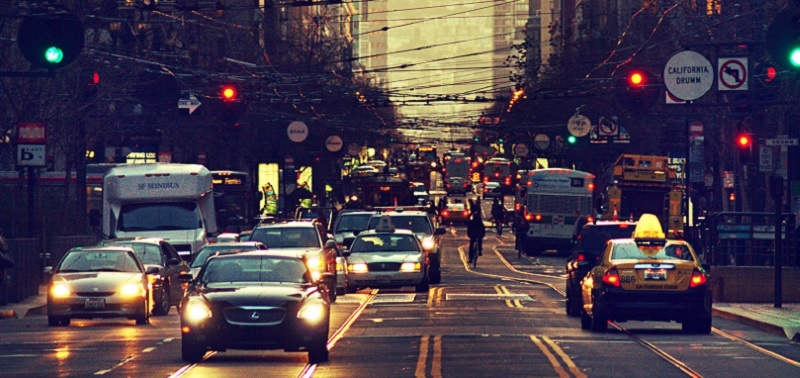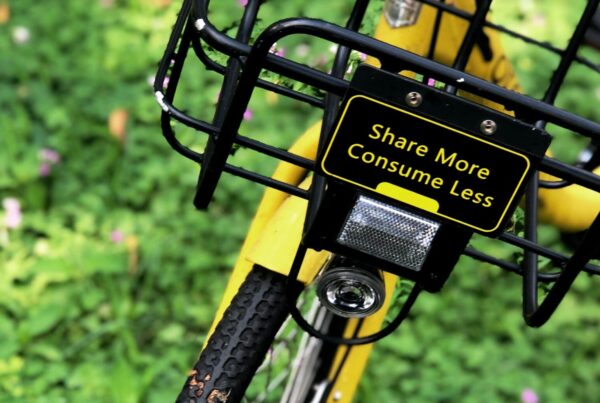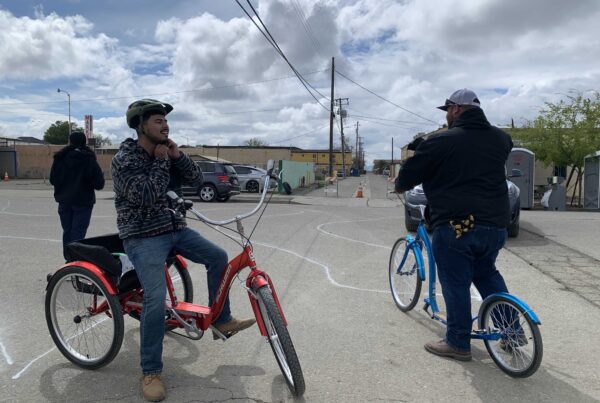Last month we celebrated the life of St. Patrick, a man famous for driving the snakes out of Ireland. Now, it’s time to pay homage to a similar feat.
Without much fanfare, San Francisco recently became one of the first cities in the nation to achieve what some thought impossible: break its reliance on the private automobile.
According to travel survey results shared at a February meeting of the San Francisco Municipal Transportation Agency (SFMTA) board, 48 percent of trips in San Francisco last year were made driving alone or with others, while 52 percent were made using active and shared modes of transportation such as bikesharing, walking and public transit (although the split may be closer to 50/50 after accounting for survey variability of +/- 4%).
The announcement means that the SFMTA has already surpassed its 2012 goal to reduce private car trips to 50 percent of all city trips by 2018. In fact, according to the SFMTA’s presentation, the city had unknowingly been living a car-lite lifestyle for the past several years.
San Francisco’s previous benchmarks were based mostly on traffic planning forecasts and U.S. Census data, the SFMTA said, while the new data comes from a more accurate annual travel behavior survey that the agency began administering in 2012.
Methodology aside, San Francisco’s achievement is impressive. While it’s difficult to make direct comparisons since San Francisco’s travel survey is unique, consider that in metropolitan areas such as Los Angeles, Chicago and Seattle, at least 70 percent of commuters still drive alone to work. Only transit-rich New York City has a commuter mode split approaching 50/50.
San Francisco’s Approach
According to the SFMTA’s report and various accounts, contributing factors to San Francisco’s success in reducing private auto travel include:
- New transportation improvements, technologies and services: Evidence suggests the more choices people have, the less likely they are to rely on private automobiles. San Francisco has long been a driving force in shared mobility, with more innovative services – ranging from scooter sharing to ridesharing for senior citizens – than any other city in the nation. In turn, residents have access to an extremely rich set of travel options, and have increasingly embraced these new shared modes. For instance, an estimated 25 percent of San Francisco residents use Transportation Networking Companies like Lyft and Uber at least once each month.
- Compact development: San Francisco is relatively small and densely populated. At 47 square miles, it’s much easier to traverse via walking bikesharing or transit than other, more sprawling metropolitan areas.
- Numerous walkable neighborhoods: Many of Francisco’s neighborhoods have a rich mix of uses. The most walkable neighborhoods in San Francisco, with Walk Scores nearing a perfect 100, include Chinatown, the Financial District and the Tenderloin.
- Growth in the urban core: New construction in 2013 was up 26 percent over the last decade in San Francisco and employment rose by 17 percent, according to the SFMTA’s presentation.
- Changing travel behavior: San Francisco has some of the worst rush-hour congestion in the nation along with scare parking downtown – factors that make walking or using transit or shared modes much more appealing. Studies suggest cities can use land-use and parking policies to help encourage behavior change.
Next Steps
While the SFMTA is considering setting a new goal in the near future, the agency suggests just remaining near the city’s 50/50 target will require significant investment in projects such as:
- Increasing transit reliability and capacity
- Expanding street safety and complete streets projects
- Adding protected facilities to the bicycle network
- Supporting transportation choices through active transportation and shared mobility facilities
We look forward to tracking San Francisco’s progress, and encourage other cities to follow its example!



